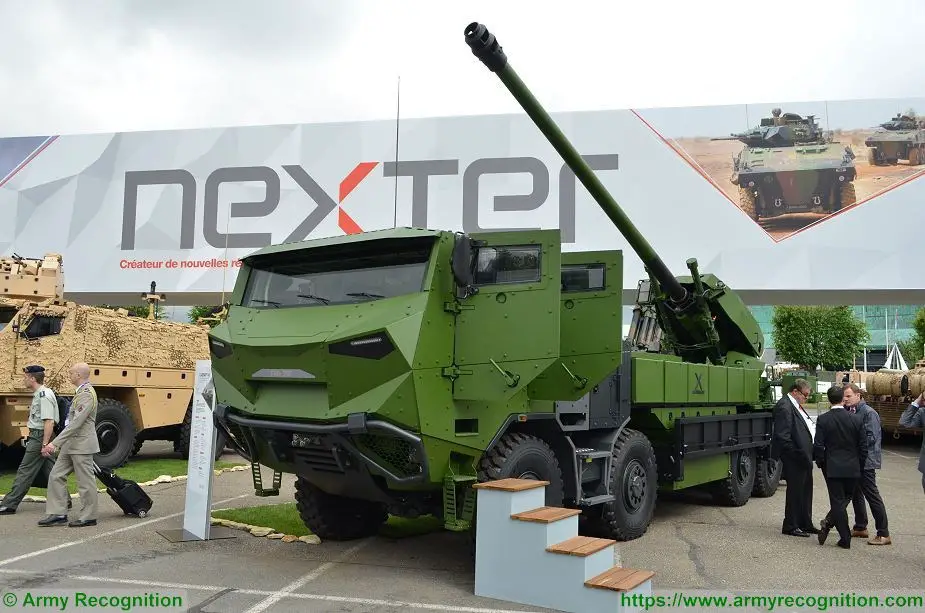The 155 mm guided shell Excalibur will soon be qualified on Caesar wheeled self-propelled howitzer, reveals a video made by the artillery regiment of the Royal Danish Army. A first shooting campaign, conducted jointly with Nexter and American Raytheon, was completed in December on the firing range of the Oksbøl Artillery and Combat Support Center, says divisional engineer Per Mørkeberg, Head of the Department of Security and Ballistics.

Nexter Caesar 155mm self-propelled howitzer on Tatra T-815 chassis (Picture source: Army Recognition)
As reported by Nathan Gain on ForcesOperationsBlog, this is another major breakthrough for this program, launched in March 2018 with the acquisition by Copenhagen of 15 Caesars on Tatra 8x8 chassis for an estimated € 40m. The Caesar implementation process within the Danish Armed Forces is partly supported by a copy in a 6x6 "rented" version by Nexter. It allows the Danish military to prepare adequate shooting tables and perform the qualifying shots necessary for the adoption of new ammunition. This campaign on the Excalibur was based on five specific parameters: the conditioning of the ammunition, the loading maneuver, the behavior of the ammunition at the exit of the mouth, the ballistic trajectories and the shooting proper.
"We have made a lot of progress this year with (...) Raytheon, and thanks to Per and his team, we have completed the third shooting stage," explains Florent Bruel, Project Technical Manager for Nexter. In addition to demonstrating the versatility of Caesar, this qualification campaign also presupposes the upcoming purchase of Excalibur shells by the Danish army, which would become the 6th user country after, among other things, its Swedish neighbor. Produced since 2005 by Raytheon, this ammunition has since been declined in three versions. The most recent, so-called "Ib", offers a maximum range greater than 50 km and a probable circular deviation (ECP) of about five meters. So many attractive performances, likely to significantly expand the capacity portfolio of Caesar and support the argument of Nexter export.
But the integration of the Excalibur should not overshadow the effort by the French military and industrial to catch up with the delay in the issue of guided munitions. "As part of the Chammal operation, the French artillery was very observed by the Americans, and the precision of its shots was particularly appreciated. This precision is due more to the quality of our guns than to that of our ammunition. On the contrary, the Americans rather drew their effectiveness from the quality of their ammunition ", admitted the CEMAT (Ground Forces Chief of Staff), General Bosser, in October 2018 during a hearing at the National Assembly.
An embarrassing situation, until last December and the first operational use of BONUS (BOfors NUtating Shell) guided shells by the Caesar of the Wagram Task Force, allowing the destruction of eight Daesh armored vehicles. "Without doubt, the successful use of the Bonus shell will be a milestone and will change the perception of an artillery" watering "the battlefield still too widespread," said Colonel François-Régis, commander of the Wagram Task Force.
And the best remains to come for French gunners, according to Nexter's ambitious development policy. Desiring to improve the performance of the artillery systems it markets, the system integrator is now working on the guided shell Katana, unveiled during the Eurosatory 2018 defense exhibition. Designed around a hybridization between a GPS signal receiver and an inertial unit, this smart ammunition could eventually reach a target located at 60 km with only a two-meter CEP (circular error probability).














